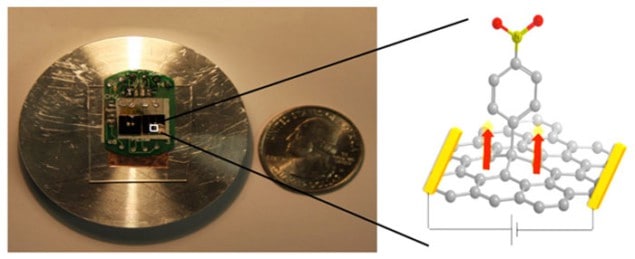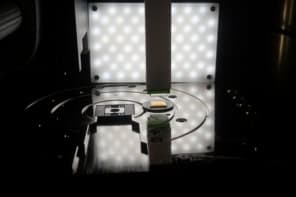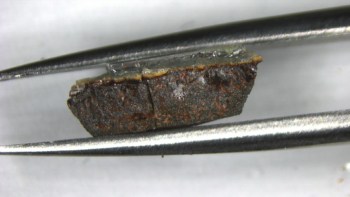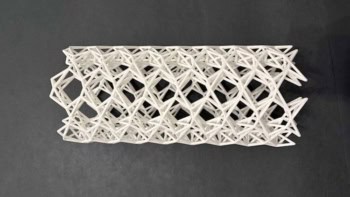
Researchers in the US have observed room-temperature ferromagnetism in a graphene nanostructure for the first time. The result, until now only predicted by theory, suggests that graphene could be used to create spintronics devices, which are circuits that use the spin of the electron to process and store information.
Graphene, a sheet of carbon just one atom thick, is a promising material for making molecular electronic devices of the future thanks to its unique electronic and mechanical properties. These include extremely high electrical and thermal conductivity plus exceptional mechanical strength. Room-temperature ferromagnetism can now be added to this already impressive list.
Sakhrat Khizroev at Florida International University and colleagues made their discovery by making a number of different measurements of the magnetic properties of graphene samples that had been functionalized with nitrophenyl (NP) groups. This involves the attachment of NP groups to the surface of graphene (see figure). The resulting graphene-based material appears to become an organic molecular magnet with ferromagnetic and antiferromagnetic ordering that persists at temperatures above 400 K.
“Unpairing” electron spins
The researchers, who include Jeongmin Hong at the University of California, Berkeley, Robert Haddon at University of California, Riverside and Walt de Heer at the Georgia Institute of Technology, have been working on these experiments since 2008. “We believe that the NP groups act to unpair electron spins at periodically spaced carbon sites along certain graphene orientations, known as ‘armchair’ and ‘zigzag’,” Hong says. “It is the interactions between these unpaired spins that lead to the magnetic order we observed.” Graphene functionalized with hydrogen also appears to have similar magnetic properties, he adds.
Ours is a “gentle chemistry” approach
Jeongmin Hong of the University of California, Berkeley
“Ours is a ‘gentle chemistry’ approach that makes use of functionalization rather than introducing defects into graphene, which is a much more aggressive strategy,” Hong explains. “Although previous research mainly looked at heavily defected material, large numbers of defects in graphene can hinder the formation of the pure zigzag edges needed for magnetism here.”
According to the researchers, the NP-functionalized graphene could be used as a new type of single-layer magnet. It might also be used to make new types of spintronics devices based entirely on carbon that exploit the unpaired spins that are present. Spintronics is a relatively new technology that exploits the spin of an electron as well as its charge.
More details about the research can be found in ACS Nano.
- This article first appeared on nanotechweb.org



